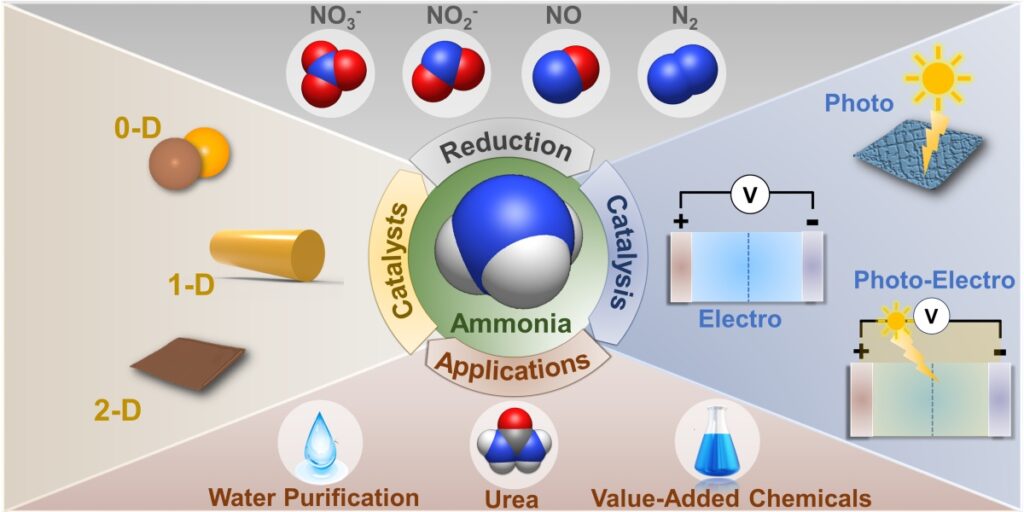Researchers report progress in ammonia synthesis using new materials
A recent review article, authored by an international team led by Martin Pumera from the Faculty of Electrical Engineering and Computer Science at VŠB-TUO, summarizes advances in the usage of low-dimensional materials for “green” ammonia production. Published in the esteemed journal Chemical Society Reviews (IF 44), the study, supported by the REFRESH project, focuses on photo- and electrocatalysis techniques as well as novel approaches to harness waste nitrogen compounds. The review article compares various methods for ammonia synthesis and highlights potential pathways toward more sustainable production, including applications in wastewater treatment and carbon-free energy systems.
Ammonia is a vital chemical, extensively used in agriculture and industry. Recently, it has also gained importance for storage, transportation, and energy recovery purposes. Ammonia (NH3) acts as a carbon-free carrier of hydrogen and energy (unlike its carbon counterpart, methane – CH4) and, unlike hydrogen, is significantly cheaper to transport. However, traditional ammonia production is highly energy-intensive and contributes to increased global CO2 emissions. Consequently, researchers are exploring new, more economical, and efficient methods for ammonia synthesis, aiming to leverage its carbon-free properties for energy storage and transport. Notably, the electrochemical reduction of nitrates to ammonia using advanced catalytic materials shows promising potential to accelerate the reaction and improve efficiency.

In the article Low-dimensional materials for ammonia synthesis, researchers from VŠB-TUO describe how materials with a thickness of a few atoms, such as graphene or nanowires, can play a key role in catalytic processes that reduce energy consumption and eliminate carbon emissions. This review paper presents an extensive library of low-dimensional materials and categorizes their catalytic performance.
“Our goal was to provide a comprehensive overview of the catalytic properties of low-dimensional materials that could enhance the efficiency of ammonia production and promote the synthesis of value-added products. The publication confirms our research team’s position among the leaders in the field of green chemistry and nanomaterials,” said team leader Martin Pumera from the Advanced Nanorobots and Multiscale Robotics Lab, who also works in one of the REFRESH project’s living labs.
The low-dimensional materials under study have unique properties that enable them to efficiently convert nitrogen or nitrates into ammonia using light, electricity, or a combination of the two. Such approaches can be greener and more energy-efficient than current industrial methods. In addition, these new processes can also help to purify water of harmful substances such as nitrates, while enabling the production of valuable chemicals such as urea. The article thus provides a comprehensive overview of how these new materials can contribute to a more sustainable chemistry.